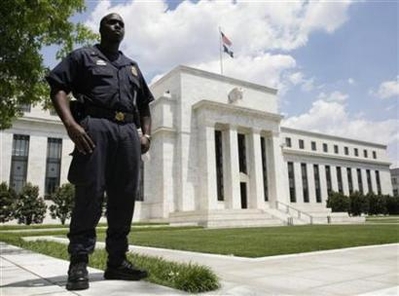
WASHINGTON (AP) – The Federal Reserve will provide as much as $900 billion in cash loans to squeezed banks in an urgent effort Monday to break through a dangerous credit clog that threatens the economy and has unhinged financial markets around the globe.
The Fed’s action is aimed at spurring spooked financial institutions, which are hoarding cash, to lend not only to each other but also to individuals and businesses.
Even as the Fed pledged to take “additional measures as necessary” to battle the worst credit crisis in decades, Wall Street was in a nosedive. The Dow Jones industrials plunged more than 500 points in morning trading. Fears spread around the globe about the ability of policymakers in the United States and abroad to turn around the situation.
The lending lockup is a key reason why the U.S. economy is faltering. Unable to borrow money freely or forced to pay a high cost to borrow, employers are cutting jobs and reducing capital investments. Consumers have retrenched.
To better open the lending spigots, the Fed said 28-day and 84-day cash loans being made available to banks will be boosted to $150 billion a piece, effective Monday. Those increases will eventually bring the amounts outstanding under the program to $600 billion.
Loans that will be made available in November to banks also will be increased to $150 billion each. That makes a total of $900 billion in credit potentially outstanding over year end, the Fed said.
The Fed also said it will begin paying interest on commercial banks’ reserves, another way to expand the central bank’s resources to battle the credit crisis.
Congress in the $700 billion bailout bill President Bush signed on Friday gave the Fed the power to pay interest on those reserves for the first time. The law accelerated the effective date to October 9 of this year, versus in October of 2011.
The move also will encourage banks to keep excess reserves at the central bank because they will now be earning interest on the money. That will help give the Fed more control over interest rates and more leverage to battle the credit debacle. Under the current formula, the Fed would pay interest of roughly 1.25 percent on excess reserves. A different rate would be paid for required reserves.
“Together these actions should encourage term lending across a range of financial markets in a manner that eases pressures and promotes the ability of firms and households to obtain credit,” the Fed said.
A growing number of economists and investors believe the Fed will be forced to do an about-face and lower its key interest rate, now at 2 percent, on or before its next meeting on Oct. 28-29.
Such a move would revive the central bank’s rate-cutting campaign which had been halted in June out of concerns that those low rates would worsen inflation. Since then, however, economic and financial conditions have dangerously deteriorated, while inflation pressures have calmed a bit.
Any reduction to the Fed’s key rate would cause a corresponding drop in commercial banks’ prime lending rate now at 5 percent. The prime rate is used to peg loans to millions of consumers and businesses.
The hope riding on such a move by the Fed would be to spur nervous consumers and businesses to spend more freely again.
By JEANNINE AVERSA
Oct. 06, 2008
Source: AP